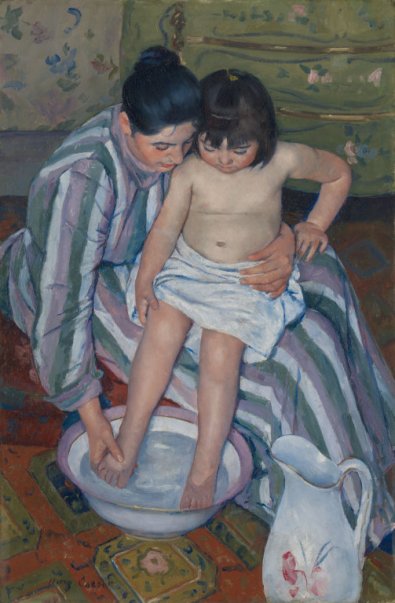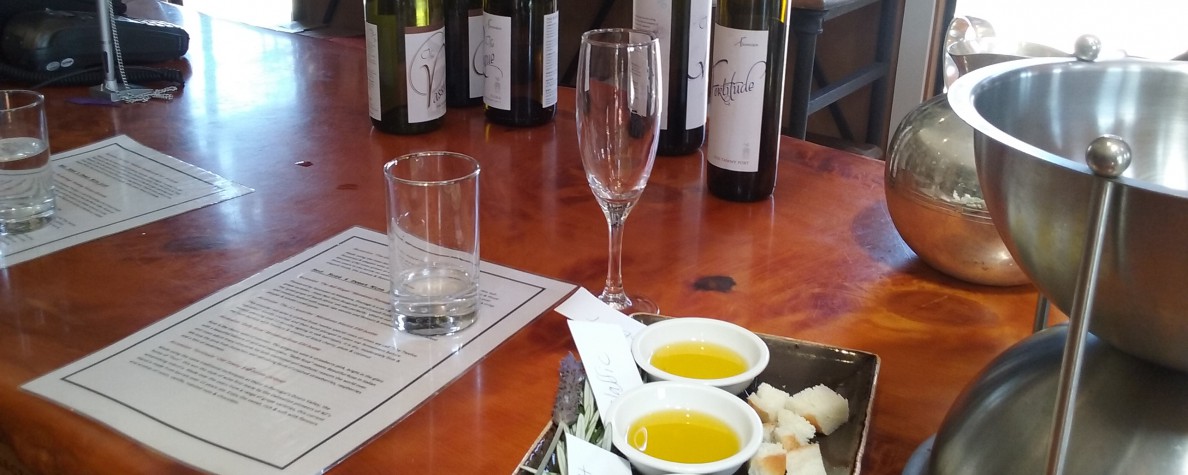
Recently I complained to my best friend that the book on the history of Western art which I had just finished reading omitted to mention a single female artist. Where, I wondered, was Mary Cassatt, Frida Kahlo, Georgia O’Keeffe? Who? She replied.
If a woman as educated and intelligent as Becks has no idea who these women then I have to wonder whether there is not still a lingering sexism in our attitudes towards art and artists, because while the vast majority of people who have had the opportunity to pursue an ‘artistic career’ have historically been male, nonetheless the 19th and 20th centuries both produced some excellent female artists (and the 21st century seems set to do the same). In my next few ‘paintings you should know’ posts I’ll therefore be drawing attention to the work of a few notable female painters, beginning with Mary Cassatt’s 1893 work ‘The Child’s Bath’.
‘The Child’s Bath’ is an oil painting on canvas measuring 100.3cm by 66.1cm, and is currently on display at the Art Institute of Chicago. It is painted in the Impressionist style and shows in particular the influence of Degas, who was a lifelong friend of Cassatt, although there is no suggestion that they were ever romantically involved.
Unlike many male artists, both historically and during her own period, who had portrayed women either in the relationship to men (as wives and mothers, or as objects of desire) or as purely decorative ‘ornaments’, Cassatt depicted women as agents acting within – and sometimes beyond – their own particular sphere. ‘The Child’s Bath’ is one of the most famous examples of her work. It captures a simple domestic scene as a mother washes her child’s feet, both completely absorbed in the action. The child slouches slightly, and the mother’s posture is determined by the work in which she is engrossed, rather than the consideration of her audience. Although undeniably tinged with Victorian/Impressionist sentimentality it is nonetheless quite controlled in its depiction of the ordinary and everyday.
Cassatt herself was a far from ordinary woman. Born in 1844 into a prosperous family, her educated mother ensured that all her children received an education which placed an emphasis on travel. In defiance of her family’s wishes, she entered The Pennsylvania Academy of the Fine Arts as a serious art student at the age of 15, although she was unimpressed by both the standard of teaching and the attitude of many of her male peers. She spent much of her adult life in France, where she studied with a number of well-known artists and later joined the Impressionist movement at the invitation of Degas. A ‘New Woman’ (the 19th century term for the feminist ideal of an educated, independent career woman) she never married and lived a life dedicated to the pursuit of her art. She died in Paris in 1926.




I know this painting well. It seems that women have be so tied to domestic work that they have not been free for their art unless they were wealthy enough to have servants – even then they were forced into embroidery. Probably why I like Yarnstorming so much.
LikeLike
I love her Nude Child painting. She captures, perfectly, the lovely feeling of a warm little body fresh from a bath. Google Artemisia Gentileschi and Élisabeth Vigée Le Brun to see two wonderful women artists who predated Cassatt.
LikeLike